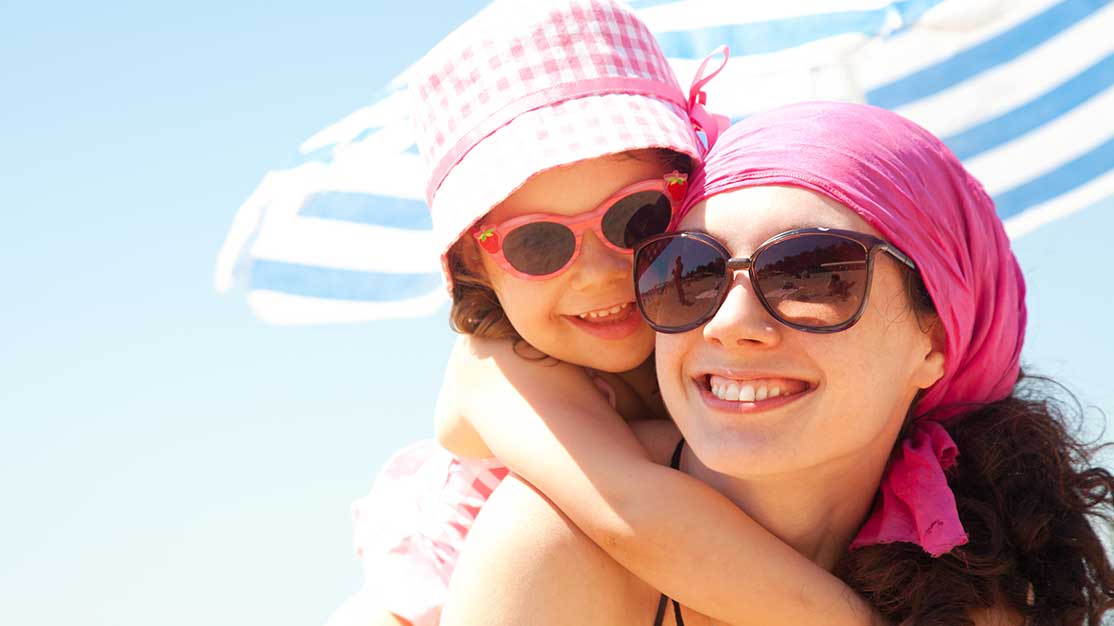Sunglasses and Kids: Protect Your Children's Eyes from the Sun

While outdoor activities help keep kids happy and healthy, sun safety is an important consideration.
Shielding kids' skin from the sun's harmful rays is a priority. But children's eyes are vulnerable to sun damage, too. In fact, kids are more susceptible to sun-related eye damage than adults. The American Academy of Pediatrics recommends that all children wear sunglasses when outdoors, to prevent eye sunburns and reduce the risk of certain eye problems later in life.
Eye Sunburn
The same ultraviolet rays from the sun that cause sunburns and skin cancer can also damage kids' eyes. Wearing a hat provides only partial protection because UV rays reflect off surfaces like water, sand and snow. Children who spend time in bright sunlight without sunglasses can get a painful eye sunburn — with burning, redness, tearing, light sensitivity and a gritty feeling in the eyes. An eye sunburn gets better within a few days and doesn't cause permanent damage. But it's a very painful experience for a child — and completely preventable with UV-protective sunglasses.
Other Eye Problems
Unprotected sun exposure increases your child's risk for certain eye problems as an adult. Just as sun damage to the skin accumulates over a lifetime, the same is true for sun-related eye damage. Children are more vulnerable than adults to the harmful effects of UV rays because the radiation extends further into their eyes. UV radiation exposure increases the risk for adult cataracts, and tumors of the eyes and eyelids. Some eye tumors are even cancerous and can be life-threatening, so it's never too early to protect your children's eyes with sunglasses.
Recommended UV Protection
While your kids' only concern might be how stylish their sunglasses are, the most important safety consideration is the UV-blocking ability of the lenses. The American Academy of Ophthalmology recommends sunglasses that block 100 percent of UV rays for both children and adults. You can't tell the UV-blocking ability based on the color or darkness of the lenses, so look for a label that specifies the UV protection. Some sunglasses specify the eye sun-protection factor, or E-SPF. An E-SPF of 25 or higher means the lenses block 100 percent of the sun's UV rays.
The Best Sunglasses for Your Kids
The best UV-blocking sunglasses won't do any good if your kids refuse to wear them. Comfort and fit are very important because no one wants to wear sunglasses that pinch, poke, slide down or fall off. So take your kids shopping for sunglasses and make it a fun outing. Tips to help you find the best sunglasses for your kids include:
- Look for sunglasses made of soft plastic or a rubbery material for babies and toddlers because they are usually most comfortable.
- Let older children and teens pick the style they want — as long as it offers good UV-protection.
- Encourage your kids to choose big-lens or wraparound styles to better block the sun and protect their eyes.
- Choose sunglasses with a spring hinge to help keep them in place if your kids are highly active or tend to lose things.
- Consider shatterproof lenses if your child will be wearing the sunglasses while playing sports.
Prices for children's sunglasses vary greatly. But a higher price tag doesn't necessarily mean better sun protection. Many stores offer affordable kids' sunglasses with 100 percent UV blocking.
How will you make shopping for sunglasses with your kids fun?
Author Bio:
Tina M. St. John runs a health communications and consulting firm. She is also an author and editor, and was formerly a senior medical officer with the U.S. Centers for Disease Control and Prevention. St. John holds an M.D. from Emory University School of Medicine.
Sources:
- Pediatrics: Policy Statement--Ultraviolet Radiation: A Hazard to Children and Adolescents
- Review of Optometry: The Role of UV Damage in Ocular Disease
- World Health Organization: What Are The Effects of UV on The Eye?
- American Academy of Ophthalmology: How to Choose the Best Sunglasses: Six Things to Consider
- Clinical Ophthalmology: Ultraviolet Damage to the Eye Revisited: Eye-Sun Protection Factor (E-SPF��), a New Ultraviolet Protection Label for Eyewear
- The Vision Council: UV Protection for Kids
- AllAboutVision.com: Sunglasses for Kids
- American Optometric Association: Protecting Your Eyes from Solar Radiation
Photo Credit:
Stockbyte/Stockbyte/Getty Images
Clinical Review By/Date:
Reviewed by Amy Magill, MA, RD, LDN on June 12, 2015.